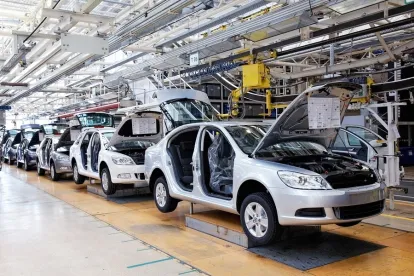There has been much attention recently regarding the efforts made to complete recalls in a timely and effective manner. Significant, high-profile recalls have garnered media attention as well as regulatory scrutiny as OEMs have faced challenges in ensuring consumers respond to recall notifications and have repairs completed. Recall administration is not as easy as it may seem, but the industry is making progress in responding to new challenges.
We have researched and analyzed available data from the Quarterly Progress Reports (“QPR”) that manufacturers submit to National Highway Traffic and Safety Administration (“NHTSA”) to see just how well companies are doing with their recall administration. What did we find? For the last 10 years, recall completion rates have modestly increased. The average completion for recalls completed inched up from 76 percent to 80 percent in the period from 2004 through 2013. Median completion rates have demonstrated a similar increase over the period, from 75 percent to 85 percent.

Completion rates vary significantly depending on several factors, one of which is the type of component that failed. For example, completion rates for air bags and seat belts were, on average, much lower than those for power train and steering-related defects throughout the last 10 years. Relatively high completion rates for power train components—which average 83 percent—may be tied to longer manufacturer warranties for such components, providing owners a greater incentive to visit their authorized dealership to have these repairs completed. Vehicle speed control and seat belt related recalls are the lowest for completion rates, at about 70 percent and 71 percent, respectively.

Two other factors that strongly influence recall completion rates are vehicle age and the size of the recall. Completion rates for recalls involving older vehicles are generally lower, often significantly. The widest disparity is between vehicles older than three years at the time of recall (59 percent completion rate) and newer than three years (80 percent). The likely reason for this difference is that many vehicle warranties (for a majority of components) last for three years.

Further, completion rates for larger recalls (more than 100,000 units) are often approximately 5 percent to 10 percent lower than for smaller-sized recalls. This happens because a limited recall is likely to be much more directed to vehicle owners who are or have been impacted by the issue, making them more likely to take their vehicles in for the repair. Larger recalls may be broader, and there is a greater chance that owners did not experience the defect and might not view a repair as a priority.
Recalls with the lowest completion rates historically were also identified. As part of this analysis, different time periods were considered, including 2000-present, 2005-present, and 2010-present. It is apparent that average completion rates for the recalls with the lowest completion rates are generally less than 70 percent, with variance observed across different OEMs and time periods. Similar to our analysis of recall completion rates more generally, completion rates for these recalls have also increased in recent years. This appears to support that the industry has made improvements in the recall administration process leading to higher completion rates for even the recalls with the lowest of completion rates.

Other Qualitative Factors Impacting Completion Rates
In addition to the factors described above, it is important to appreciate that certain factors may negatively influence completion rates. Such factors may include:
-
Consumer fatigue due to significant recent increases in recall volumes;
-
Consumer perception of severity and the inconvenience of repair may be leading some to delay immediate action;
-
The aging U.S. vehicle fleet has resulted in a larger number of vehicles being unreachable for repair; and
-
Consumers are increasingly technologically inclined, making them less likely to respond to paper mailings.
These factors are supported by results of consumer surveys done by various research organizations as well as by discussions with industry experts.
However, other factors are having a positive impact on recall completion rates observed. For example, one company that works on recall completion outreach with many automakers has found success through a combination of postcard mailers, email and phone outreach to track down and demonstrate to owners that they need to repair their vehicles.
This article was written by special guest authors Neil Steinkamp and Jake Reed.



 />i
/>i

